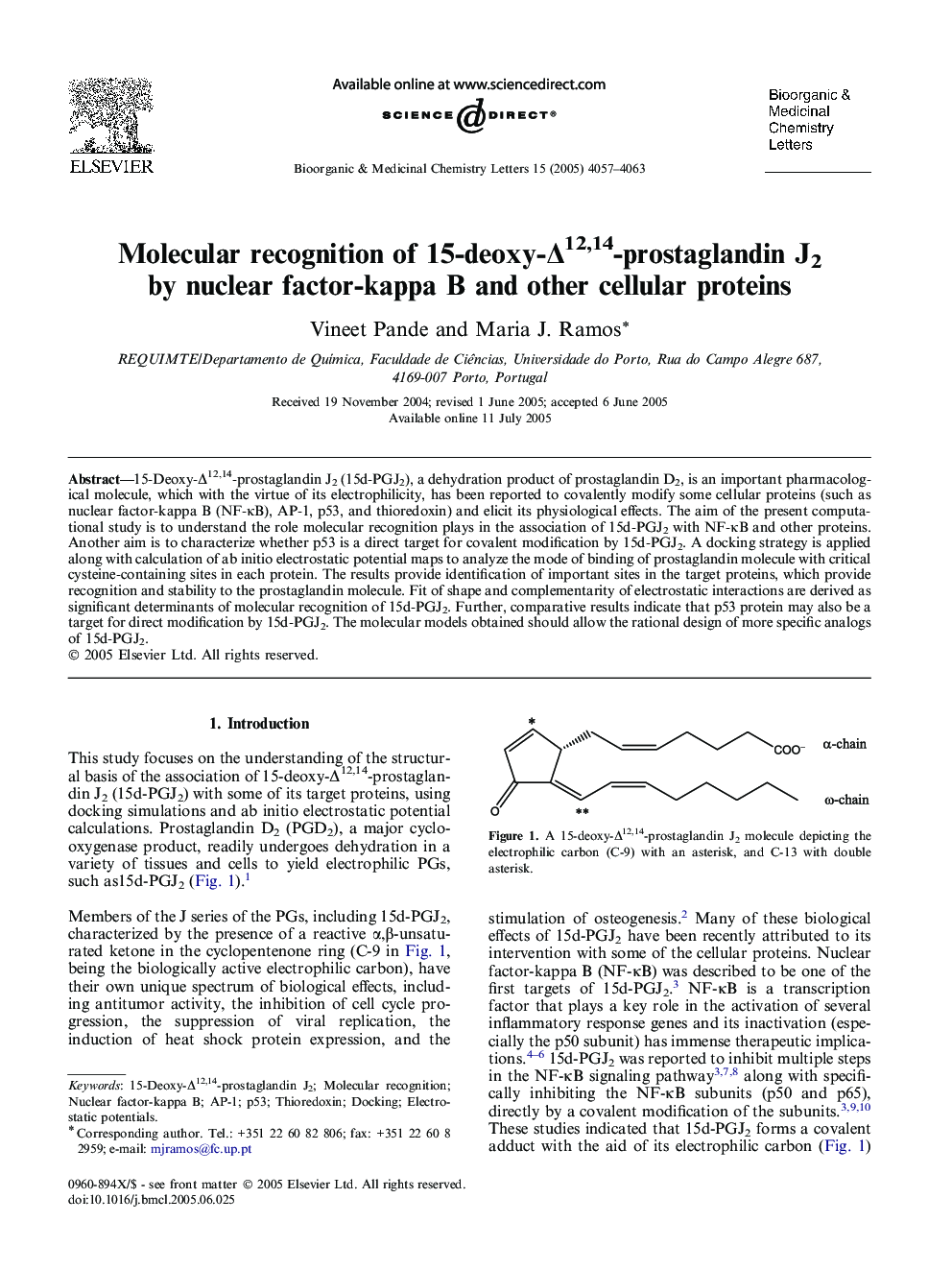| Article ID | Journal | Published Year | Pages | File Type |
|---|---|---|---|---|
| 1378122 | Bioorganic & Medicinal Chemistry Letters | 2005 | 7 Pages |
15-Deoxy-Δ12,14-prostaglandin J2 (15d-PGJ2), a dehydration product of prostaglandin D2, is an important pharmacological molecule, which with the virtue of its electrophilicity, has been reported to covalently modify some cellular proteins (such as nuclear factor-kappa B (NF-κB), AP-1, p53, and thioredoxin) and elicit its physiological effects. The aim of the present computational study is to understand the role molecular recognition plays in the association of 15d-PGJ2 with NF-κB and other proteins. Another aim is to characterize whether p53 is a direct target for covalent modification by 15d-PGJ2. A docking strategy is applied along with calculation of ab initio electrostatic potential maps to analyze the mode of binding of prostaglandin molecule with critical cysteine-containing sites in each protein. The results provide identification of important sites in the target proteins, which provide recognition and stability to the prostaglandin molecule. Fit of shape and complementarity of electrostatic interactions are derived as significant determinants of molecular recognition of 15d-PGJ2. Further, comparative results indicate that p53 protein may also be a target for direct modification by 15d-PGJ2. The molecular models obtained should allow the rational design of more specific analogs of 15d-PGJ2.
Graphical abstract15-Deoxy-Δ12,14-prostaglandin J2 (15d-PGJ2) binds to its target proteins and covalently modifies critical cysteine residues. A computational docking and electrostatics study is performed to understand the structural basis of this binding, providing fertile ground for rational design of 15d-PGJ2 analogs.Figure optionsDownload full-size imageDownload as PowerPoint slide
